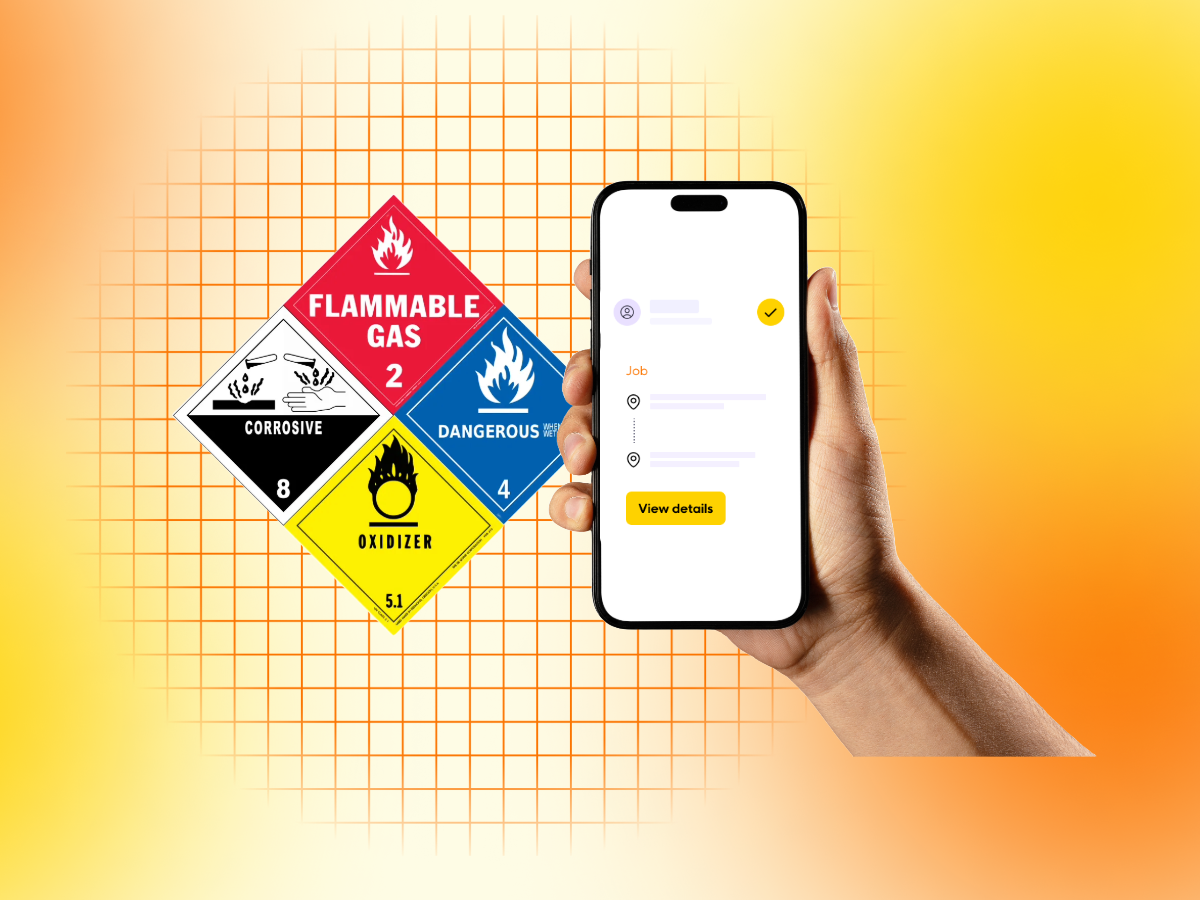When you transport dangerous goods, the job isn’t just getting them from A to B. You also need to make sure that you follow all of the safety and legal requirements when transporting these items.
That’s why couriers that move hazardous materials need to be ADR certified.
In this article, we’ll guide you through the process of getting your ADR certification and explain what’s needed to stay compliant.
What we’ll cover
Get access to 15,000+ loads a day on Courier Exchange
Be your own boss. Set your own hours. Make your own money.
What is ADR?
ADR (Accord Dangereux Routier) stands for the European Agreement concerning the International Carriage of Dangerous Goods by Road. This agreement sets out the rules for safely transporting hazardous materials across Europe.
Couriers who carry dangerous goods, like chemicals or flammable items, must have this certification. It makes sure you know how to safely handle, load, and transport these materials.
Who needs an ADR certification?
If you’re moving hazardous goods by road, ADR certification is required. This applies to independent couriers, drivers working for transport companies, and businesses themselves.
The law is strict, and non-compliance can lead to heavy fines or even prosecution. Whether you carry hazardous loads regularly or only occasionally, this certification is important for staying on the right side of the law.
Steps to get ADR certified
Here’s a quick guide to the steps for getting ADR certified:
Step 1: Choose the right course
There are different types of ADR courses depending on what kind of goods you’ll transport. Most couriers will need the basic ADR course, but if you handle more complex materials, you may need a more advanced course.
Pick a certified training provider. The UK government website provides a list of official training centres. It’s important to select a recognised one to make sure your certification is valid.
Step 2: Enrol in ADR training
ADR training covers both theory and practical skills. You’ll learn about different types of dangerous goods, correct packing and labelling, and emergency procedures.
Courses last between 3-5 days, depending on the type of training. Make sure you attend all sessions—missing any part could mean retaking the course.
Step 3: Pass the exam
At the end of the course, you’ll take an exam. This usually involves multiple-choice questions about what you learned during training.
The exam is designed to test your practical knowledge. So, if you’ve paid attention in class, you should pass without too much trouble.

Responsibilities of load posters and forwarders posting ADR loads
It’s not just couriers who need ADR certification. Load posters and freight forwarders also have important responsibilities.
Dangerous Goods Awareness Training (DGAT): Anyone involved in transporting dangerous goods, including load posters, needs to complete DGAT. This helps them understand the risks and correct procedures.
Appointing a Dangerous Goods Safety Adviser (DGSA): Businesses involved in carrying, packing, or unloading dangerous goods may need to appoint a DGSA. This person makes sure the company is following ADR rules and meeting safety standards.
Accurate documentation: Forwarders must make sure dangerous goods are classified, labelled, and documented correctly. Without proper documentation, there can be delays or even penalties.
Safe loading practices: Load posters and forwarders need to make sure goods are loaded securely to avoid accidents during transport.
Communication of risks: It’s important to inform drivers of the specific risks with each load. Load posters must give clear instructions for safe transport and delivery.
Benefits of an ADR certification
Getting ADR certification isn’t just about following the law—it opens up new opportunities.
Many customers need couriers with ADR certification. Being certified means you can take on these higher-paying jobs, do more international courier work, and build trust with customers looking for reliable transport.
As a bonus, make sure you have vehicle tracking in your courier van, so customers know where their loads are.
Maintaining your ADR compliance
Your ADR certification lasts for five years. After that, you’ll need to take a refresher course and pass another exam to keep it valid.
ADR rules can change over time. Taking a refresher course and exam will also help you keep up to date with new regulations and the latest safety practices.
Conclusion
ADR certification is required for any courier wanting to transport dangerous goods safely and legally. The process is simple, and once certified, you’ll be able to offer more services and find new job opportunities.
Whether you work alone or for a larger company, ADR certification gives you the skills to transport hazardous goods in a safe and legal way.




